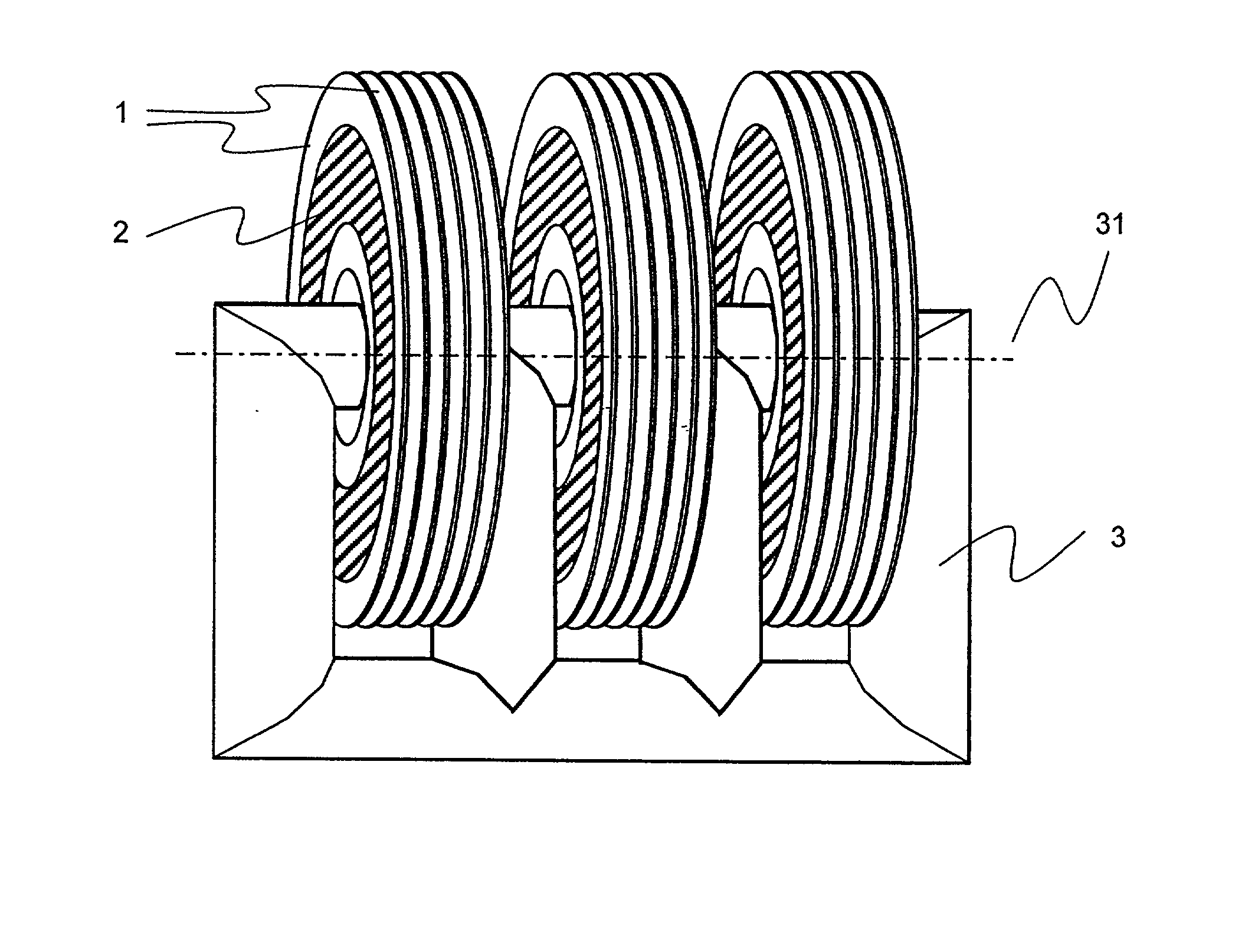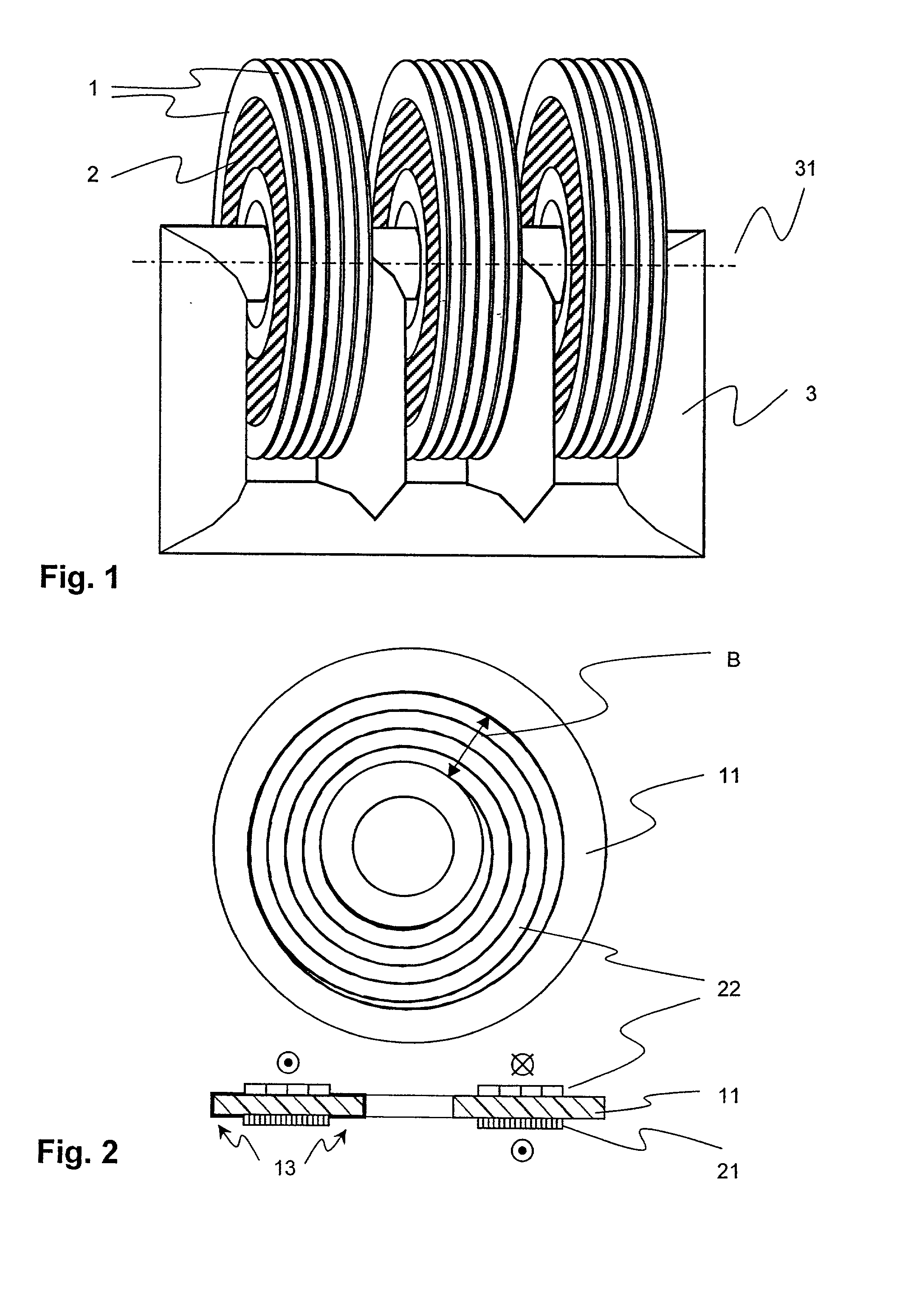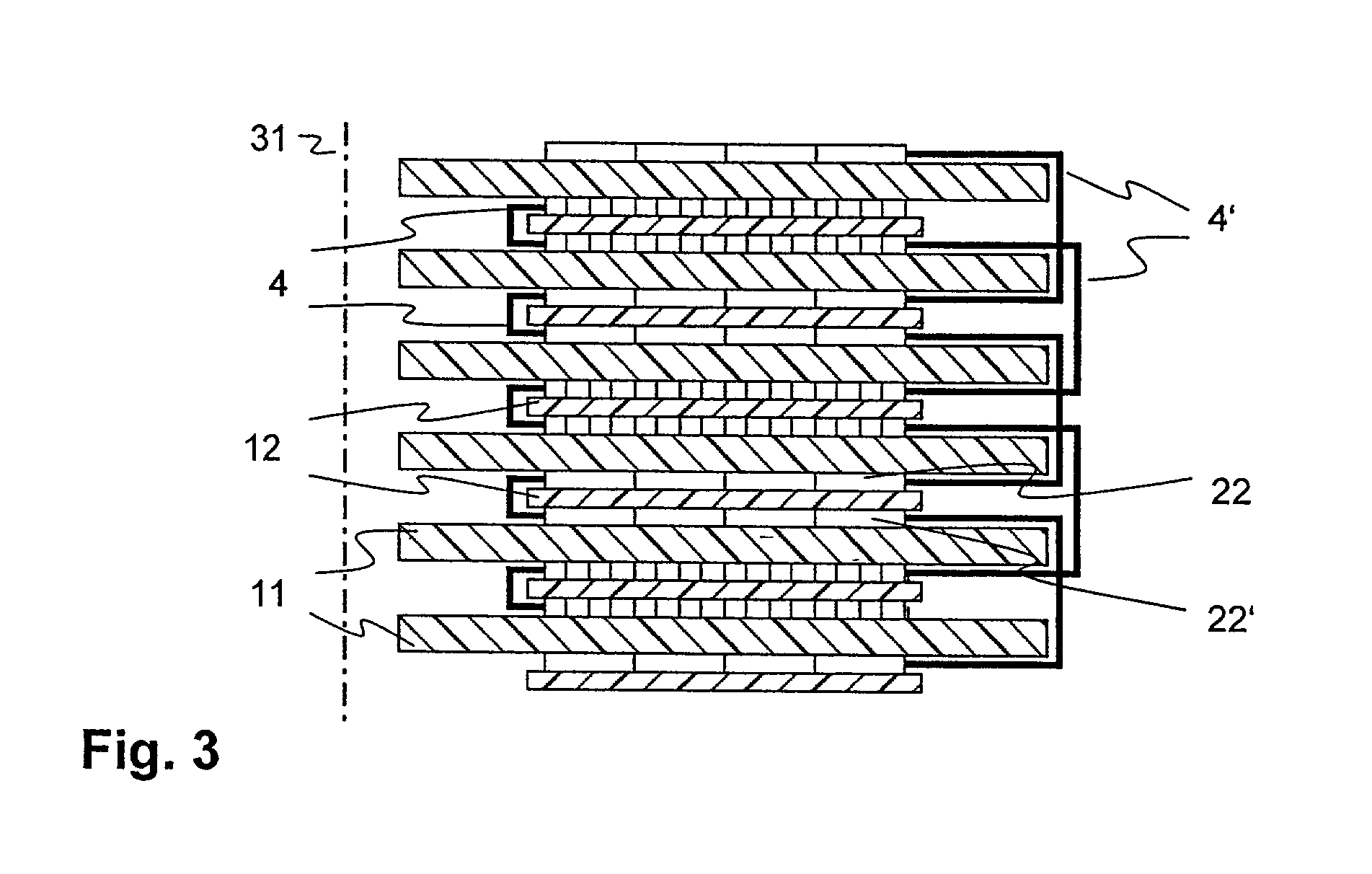Transformer winding
- Summary
- Abstract
- Description
- Claims
- Application Information
AI Technical Summary
Benefits of technology
Problems solved by technology
Method used
Image
Examples
first embodiment
[0008] In the transformer winding according to the invention, the spacing elements are subdivided into a number of partial elements or have cutouts or channels, through which a cooling liquid can circulate in order to cool the conductor tracks during operation of the transformer.
second embodiment
[0009] the transformer axis is provided vertically, that is to say at right angles to the earth's surface. This arrangement is self-supporting, and only the lowermost conductor track need be supported and, possibly, electrically insulated from the core or housing of the transformer.
[0010] According to a further embodiment, the conductor tracks of the high-voltage winding and those of the low-voltage winding are each identical to one another, so that only two different conductor track types need be manufactured and stocked.
[0011] According to a further embodiment, the high-voltage and low-voltage conductor tracks are combined in pairs to form modules. The current density integral over a module cross section which lies in a plane including the transformer axis is in this case approximately equal to zero, that is to say the total current intensity integrated over all the turns in the low-voltage conductor track is equal and opposite to that in the high-voltage conductor track. In cons...
PUM
 Login to View More
Login to View More Abstract
Description
Claims
Application Information
 Login to View More
Login to View More - R&D
- Intellectual Property
- Life Sciences
- Materials
- Tech Scout
- Unparalleled Data Quality
- Higher Quality Content
- 60% Fewer Hallucinations
Browse by: Latest US Patents, China's latest patents, Technical Efficacy Thesaurus, Application Domain, Technology Topic, Popular Technical Reports.
© 2025 PatSnap. All rights reserved.Legal|Privacy policy|Modern Slavery Act Transparency Statement|Sitemap|About US| Contact US: help@patsnap.com



